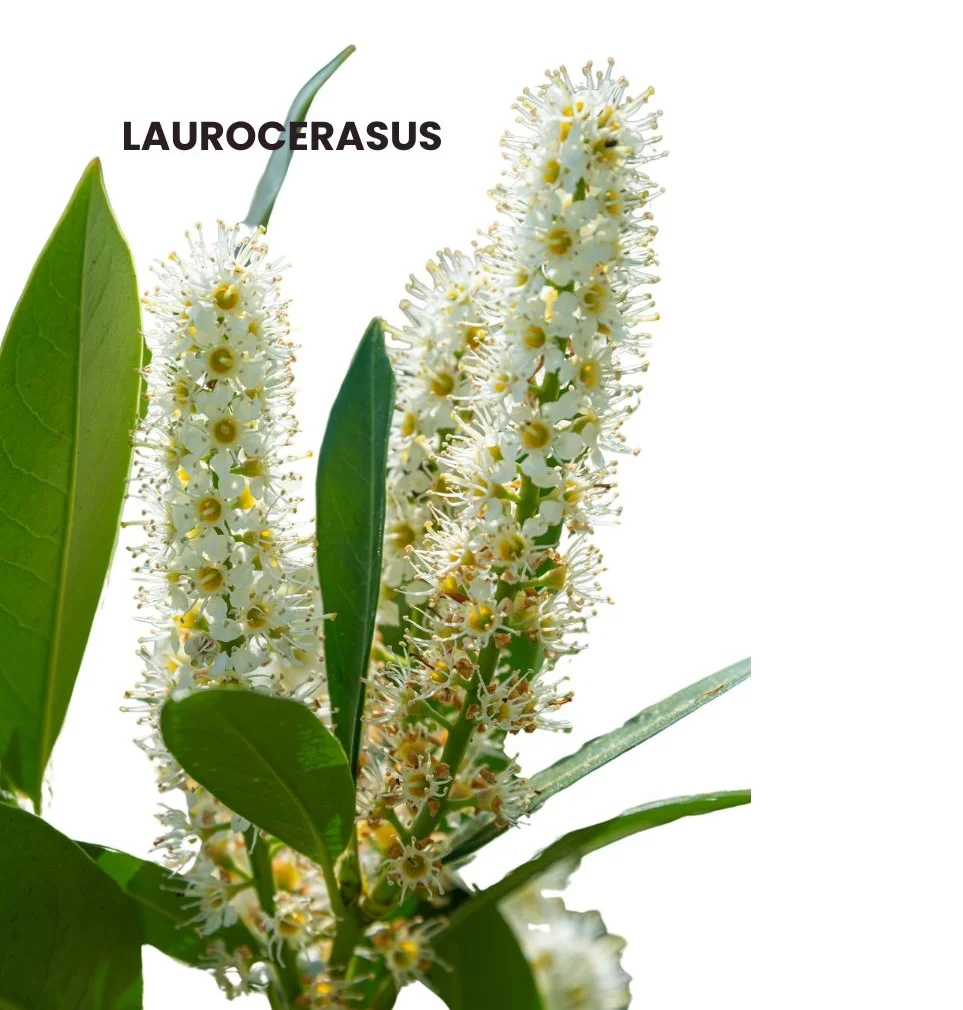Laurocerasus, also known as Cherry-laurel, is a homeopathic remedy derived from the plant Prunus laurocerasus.
This remedy is particularly effective for certain respiratory and cardiac conditions, and it is known for its ability to influence spasmodic tickling coughs, especially in patients with heart issues.

Table of Contents
ToggleSOURCE INFORMATION
Scientific Classification
- Family: Rosaceae
- Genus: Prunus
- Species: Prunus laurocerasus
Origin and Historical Facts
- Cherry-laurel is a shrub native to southeastern Europe and southwestern Asia.
- It has been used traditionally for its medicinal properties, especially in treating respiratory and cardiac issues.
- The leaves of this plant contain prussic acid (hydrocyanic acid), which gives the remedy its powerful effects on the respiratory and circulatory systems.
KEY CHARACTERISTICS
- Respiratory and Cardiac Affinity: Laurocerasus is highly effective in treating spasmodic coughs and certain heart conditions, particularly those involving mitral valve issues.
- Lack of Reaction: Patients often exhibit a lack of reaction, especially in chest and heart ailments.
- Coldness: General sensation of coldness not improved by warmth, indicating poor peripheral circulation.
- Spasmodic Symptoms: Includes spasms of facial muscles and the esophagus, and severe pains in the stomach.
DETAILED ORGAN SYMPTOMS
HEAD
- Anxiety and restlessness.
- Spasms affecting the facial muscles and oesophagus.
RESPIRATORY
- Cyanosis: Bluish discoloration of the skin due to poor circulation or inadequate oxygenation of the blood.
- Dyspnea: Difficulty in breathing, worsened by sitting up.
- Cough: Tickling, dry cough often accompanied by cardiac symptoms such as mitral regurgitation. The cough may produce copious, jelly-like, or bloody expectoration.
- Constriction of the Chest: Sensation of tightness and difficulty in breathing.
- Pulmonary Issues: Threatening paralysis of the lungs, leading to severe respiratory distress.
HEART
- Mitral Regurgitation: Incompetence of the mitral valve causing backflow of blood and associated symptoms.
- Cyanosis Neonatorum: Blue discoloration seen in newborns, often related to heart defects.
- Palpitation and Clutching at Heart: Episodes of palpitations and a sensation of clutching at the heart.
- Small and Feeble Pulse: Indicates weak circulation and cardiac function.
- Gasping for Breath: Severe shortness of breath, often requiring the patient to clutch at their heart.
FEVER
- Alternating chills and heat with general coldness.
- Thirst with a dry mouth, especially in the afternoon.
SLEEP
- Episodes of deep sleep accompanied by snoring and stertorous (heavy, labored) breathing.
EXTREMITIES
- Nail Changes: Toe and finger nails become knotty.
- Skin Discoloration: Skin appears blue, indicating poor oxygenation.
- Clubbing of Fingers: Enlargement and rounding of the fingers, often associated with chronic hypoxia.
- Cold, Clammy Extremities: Indicative of poor peripheral circulation.
- Sprained Pains: Pain in the hips, thighs, and heels.
RELATIONSHIP WITH OTHER DRUGS
Compare with
- Hydrocyanic acid: Known for its powerful effects on the nervous system and similar cyanotic symptoms.
- Camphor: Used for sudden collapse and coldness, especially in acute conditions.
- Secale: Indicated for gangrenous conditions and coldness, often with a bluish discoloration.
- Ammonium carb: Useful in respiratory distress and heart conditions with cyanosis.
- Ambra grisea: Effective in treating nervousness and respiratory symptoms.
DOSE
- Potency: Tincture to third potency.
- Cherry-laurel Water: Two to five drop doses for acute conditions.
Frequently Asked Questions (FAQs)
What is Laurocerasus used for in homeopathy?
- Laurocerasus is primarily used for respiratory and cardiac conditions, particularly spasmodic tickling coughs, cyanosis, and mitral regurgitation.
How does Laurocerasus affect the respiratory system?
- It helps alleviate symptoms of dyspnea, cyanosis, and spasmodic coughs, often providing relief in cases of severe pulmonary distress.
Can Laurocerasus be used for newborns with cyanosis?
- Yes, Laurocerasus is indicated for cyanosis neonatorum, a condition where newborns exhibit blue discoloration due to heart defects.
What are the key symptoms indicating the use of Laurocerasus?
- Key symptoms include spasmodic tickling cough, general coldness, cyanosis, dyspnea, mitral regurgitation, and a lack of reaction in chest and heart ailments.
How is Laurocerasus administered?
- Laurocerasus is administered in tincture form or in potencies up to the third potency. Cherry-laurel water can be given in doses of two to five drops.
Glossary of Difficult Words
- Cyanosis: Bluish discoloration of the skin due to poor circulation or inadequate oxygenation.
- Dyspnea: Difficulty in breathing.
- Mitral Regurgitation: A condition where the mitral valve does not close properly, causing blood to flow backward in the heart.
- Palpitation: Noticeably rapid, strong, or irregular heartbeat.
- Clubbing: Enlargement and rounding of the fingers, often associated with chronic oxygen deprivation.
- Stertorous Breathing: Heavy, laboured breathing, often with a snoring sound.
- Hypoxia: Deficiency in the amount of oxygen reaching the tissues.
- Asphyxia Neonatorum: A condition in newborns characterized by insufficient oxygen, leading to cyanosis and respiratory distress.
